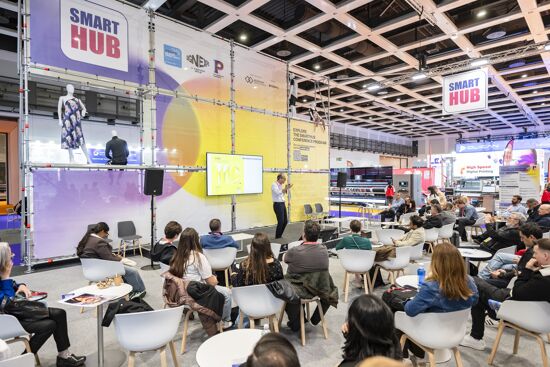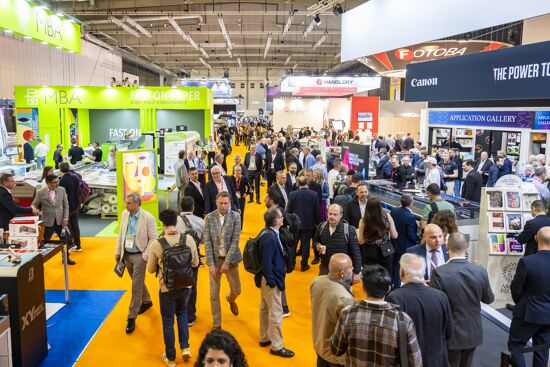A true RGB printer – LumeJet S200
LumeJet is confident that its LED-based imaging system combined with precision fibre optics will attract users who want high colour gamut and true continuous tone imaging, even if it goes against a decade-long trend.
The imaging heads in the LumeJet S200 printer are based on LEDs. But through a fibre taper, acting as a lens, the original resolution of about 400 dpi is increased to around 4000dpi, to match the resolving power of the photo sensitive material. It means that the light from an individual optical fibre creates a red, green or blue spot of the size of the silver halide particle itself.
This is why LumeJet markets the printer as a true RGB printer, producing true contone images much like photographs from the days before the inkjet printers started to dominate this sector.
Another benefit of using an RGB-based imaging system, or as LumeJet puts it “writing with light, not ink” is that the gamut should be larger than when using a conventional CMYK ink setup. This assumes that the photo-sensitive material really has a very large colour gamut and contrast, including the capacity to produce a solid and deep black.
LumeJet DPH uses 288 LEDs to print a swathe approximately 6 mm wide at a resolution of 400 dpi. The printer uses a twin head system, with an effective swathe print width of about 12 mm. The design allows for multiple heads, a master and ‘n’ slaves, connected via a high speed Gigabit bus – the more heads, the faster the print speed.
We haven’t made an exhaustive test of the LumeJet S200 yet, but a brief analysis of an ICC profile indicates a colour gamut of around 550,000 colours. Compared with the gamut of about 400,000 colours for conventional offset on coated paper, the LumeJet S200 produces a colour gamut that is roughly 40% larger.
But a fairer, more relevant comparison would probably be to compare the gamut of the LumeJet with the gamut achieved by awide gamut inkjet system, with extended ink setups, for example additional Red, Green and Blue ink. We have measured the gamut from such systems to match that of the LumeJet, so anyone considering buying a LumeJet 200 will then have to consider other factors, like total price of ownership and of course printing speed.
It should be said that the LumeJet S200 is the first model targeted at this market to come out of the R&D facilityat LumeJet. The imaging head can be modified both to increase speed and/or resolution, so we might see other models and configuration of the LumeJets in a near future. At the moment the maximum output size from the printer is 1000 x 305mm, suitable for Landscape A3 photo books and similar.
The printing speed is 200 A4 pph, higher than for wide gamut inkjet-based systems, but lower than that of toner-based systems.
What about environmental friendliness and the use of silver halides? According to LumeJet, the Waste Recovery Unit neutralises the hazardous waste by retrieving the silver halides, so the used water can safely and legally be flushed down the drain.
It will be interesting to see the uptake in the market for the LumeJet 200. It will appeal to those who want to have photos and photobooks with the “look and feel” of high quality photographs from the analogue days, but through a modern digital process. According to LumeJet the price per copy will be very attractive, and the stability of the imaging system and low maintenance costs are other key factors as to why photo printing companies should have a closer look at the system.
Topics
Interested in joining our community?
Enquire today about joining your local FESPA Association or FESPA Direct
Recent news

Industry Experts Explore the Evolution of Smart Manufacturing in the Textile Industry
A FESPA SmartHUB roundtable at Personalisation Experience 2025 discussed smart manufacturing's transformative impact on the textile industry. Experts highlighted the shift to on-demand customisation, driven by digital printing, data analytics, and automation. Key takeaways included enhanced machine control, significant waste reduction through intelligent software and colour management, and improved sustainability via energy efficiency and near-shoring, ensuring agility and environmental responsibility in textile production.

FESPA 2025 gathers leading visionaries from across the speciality print industry in Berlin
FESPA Global Print Expo 2025, European Sign Expo and Personalisation Experience (6 – 9 May 2025, Messe Berlin, Germany) welcomed Visionaries from across the speciality print industry to shape the future of print, develop forward-thinking business strategies, and explore innovative ways to translate emerging industry trends into tangible growth opportunities.

Exploring Cutting-Edge Textile Printing Innovation with Adobe Print Engine 7
Adobe PDF Print Engine 7, launched at FESPA Global Print 2025, significantly advances textile printing. Debbie McKeegan shares how it automates non-white substrate management and RGB colour handling, expands colour gamuts with in-RIP multicolour transparency blending, and streamlines workflows for efficiency and sustainability. This update boosts customisation, reduces waste, and positions businesses at the forefront of digital print innovation.

FESPA Global Print Expo 2025 - Overall Highlights
FESPA Global Print Expo, Europe's leading print and signage exhibition returned to Messe Berlin from 6 - 9 May 2025.